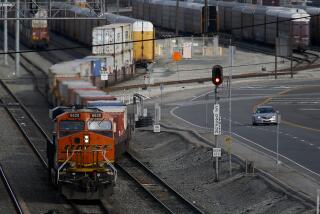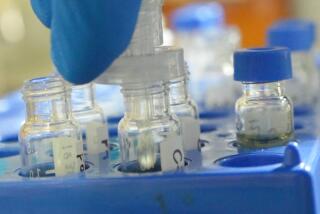How important are those emissions tests that VW cheated on?

Autos editor Brian Thevenot explains how Volkswagen used a software trick to hide illegal pollution levels in half a million diesel cars.
A lot of attention has been focused this week on Volkswagen and the scandal that it cheated on emissions tests its vehicles must pass to help combat air pollution. But are those smog standards, now in place in at least 31 states, really that important?
The answer depends on where you live. In California and many major metropolitan areas across the country, it’s a big yes — air quality has steadily improved in recent years, and better-engineered vehicles, cleaner fuels and tougher government standards all deserve some of the credit.
None of those factors, though, is directly related to any state inspection program. Nor have rural areas been particularly helped by automobile inspections, since air quality in those areas is not generally an issue.
Inspection “costs lots of money,” said Gary Bishop, a research engineer at the University of Denver. “It does very little to clean up the air.”
There are different types of testing programs, and the one that has drawn the most recent attention was the emissions scandal that rocked Volkswagen and forced the chief executive officer to step down Wednesday. That scandal was uncovered by private groups and researchers who road-tested some diesel vehicles and discovered they emitted pollutants far in excess of what earlier tests had shown in the laboratory.
But most people living in the 31 states and the District of Columbia that have some form of mandatory testing face a different situation when they seek to register their cars every few years. They go to a local testing center where an inspector, in most cases, inserts a probe to measure pollutants coming from the tailpipe. In the latest vehicles, the tester may simply plug in a computer chip.
There is no debate that the air has become far better since the advent of emissions testing, and officials say it is far less dangerous to public health. For a city like Los Angeles, 30% to 40% of the improvement in air quality in recent years can be attributed to cleaner cars and other transportation-related improvements, such as controls on the content of gasoline. That is at the high end of the impact on metropolitan regions, Bishop said.
In a 1994 study, Matthew E. Kahn, now a visiting professor at USC, said there was some evidence that vehicle inspections in Illinois had lowered ozone pollution. But the standards had not achieved expected reductions in carbon monoxide pollution.
Measuring how much air quality has improved around the country depends on what polluting agent is being measured. For example, in the northeast United States, coal-fired power plants in the Midwest are major contributors to air pollution. In the southeast United States, biogenic emissions are a key factor: Pine trees, for example, emit a large amount of hydrocarbons — different from those in cars, but they are still factors in pollution.
Federal regulations also play an important role. For example, the federal EPA is toughening standards designed to curb sulfur emissions from cars. That would come not by imposing new tests on vehicles but by imposing new regulations on how gasoline is refined. These new standards, referred to by the federal Environmental Protection Agency as Tier 3 rules, are designed to save between $6.7 billion and $19 billion in annual healthcare costs by 2030. The tougher standard, which starts in 2017, would also prevent between 770 and 2,000 premature deaths by 2030, the agency says.
Federal requirements are part of the rationale in setting up individual inspections and they help explain why some states, which do not face air quality issues, don’t feel the pressure to set up inspection programs. Such inspection regimes can be costly to administer and place added costs on consumers paying for repairs.
According to the California Air Resources Board’s annual almanac, the state’s air has seen a decrease of up to 60% in pollutants and particulate matter since 1990. This comes despite a population increase of 22% in the last 20 years and an annual increase in vehicle miles of 45%.
“Today’s car is 98% cleaner than a similar mid-1970s model, and new diesel engines are 95% cleaner than those manufactured during the 1980s,” the state report found.
Cleaner, newer cars aren’t the ones most in need of inspections, Bishop noted.
Consider this: In 1990, about 1% of all cars in Los Angeles accounted for between 4% to 5% of the pollutants in the air. By 2013, that 1% was responsible for one-third of the pollutants.
What that suggests is that a relatively smaller number of old, poorly maintained cars are contributing more than their share to the region’s smog problem.
The trick, of course, is to find that one car out of a hundred.
MORE:
Editorial: CEO’s resignation can’t make up for VW’s misdeeds
Volkswagen diesel scandal threatens to ruin its credibility and value
Lesson of VW scandal: Be wary of business executives like Fiorina and Trump
More to Read
Sign up for Essential California
The most important California stories and recommendations in your inbox every morning.
You may occasionally receive promotional content from the Los Angeles Times.











